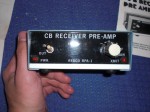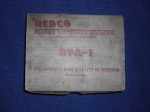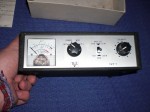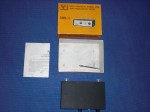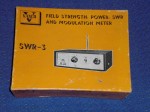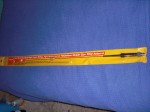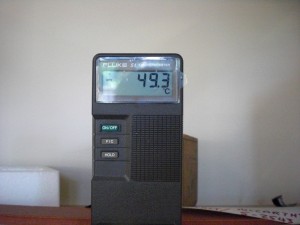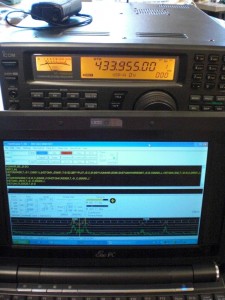Well, it’s been a little while since I’ve last posted here, and quite a bit has happened. Unfortunately (or Fortunately, depending on how you think about it) this one I’m going to talk about right now is big enough to denote it’s own specific blog post.
I’ve talked a time or two about that experiment I’ve been working on for class. Well, last weekend we launched our payloads, and it was AWESOME! Basically to preserve the feeling of how the day went, I will tell the story in chronological fashion, beginning when I got up at 4AM to make the final preparations.
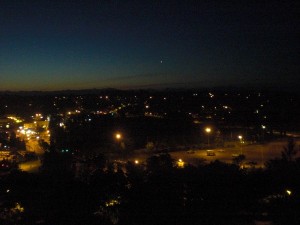
First thing’s first. I had to play the obligatory final countdown.
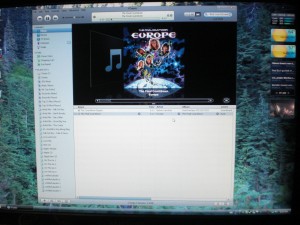
After that was taken care of, I checked over all the systems to make sure they were running properly before being placed in their flight box for the trip to Moses Lake.
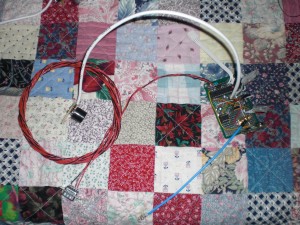

After checking, and getting everything together, the sun was rising, and it was time for me to head across campus to the Earth and Space Sciences building.


Then we all packed into vans and drove over to Moses Lake. That was a mostly boring part, but here’s a picture of Mt. Rainier from the 520 Bridge.

Then magically we arrived there and started setting up everything. Here’s some shots of the antennas we will shortly be using to track and get data off the balloons. The two antennas in the first picture are for the two main telemetry packages that I won’t be using. The second shot shows the first two antennas again, and then two more. The one I used to get my data back was the tall, long one on the left.
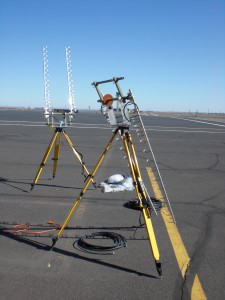

Then all the groups had time to make sure their payloads were still in running order, and get last minute things prepped for launch. You can see my payload here by my eeePc and the radio receiver. I changed to a fresh set of batteries (because it had to be on for the ride over to preheat the ozone sensor), and tested to make sure I was getting signal from the transmitter.
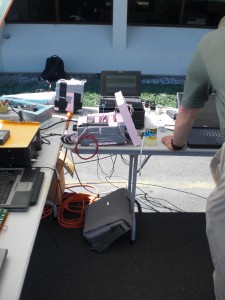
Then we sealed up the box, after attaching the transmission antenna (rather than the dummy antenna I mentioned earlier). Here’s the payload laying on the flight line. The black sticks are sticking out of the bottom and the antenna is tied in the middle of them so that when it lands on the ground, the antenna will be off the ground and give better signal for an easier recovery.
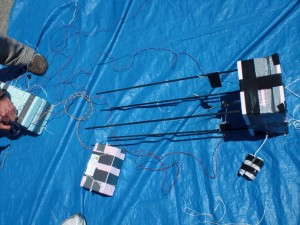
All the while, another group of students and TAs are inflating the balloon.
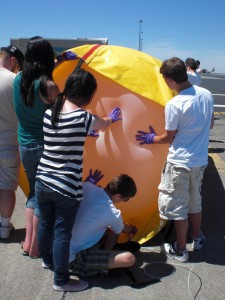
Then all that’s left to do is countdown, and liftoff!
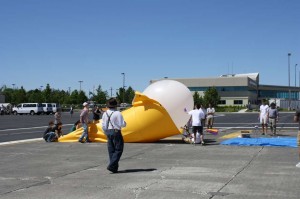
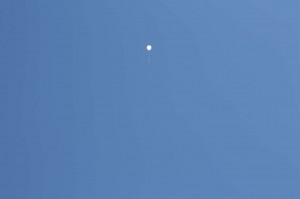
From that point on it was me manning the three radios for the two balloon’s main telemetry systems, and the one for my radio link as well. In this picture I’m looking at the people manning the antennas. I had a great team who kept all the antennas pointed exactly at the balloons to give me the best chance of pulling a clear signal down for everyone.
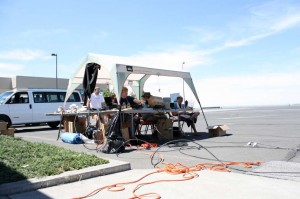
Here’s one of one of the gals positioning one of the antennas.
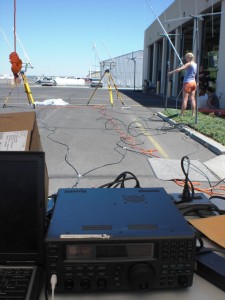
And here’s a closeup of the radio for my link, connected to my eeePc pulling down the data! Wooo RTTY!
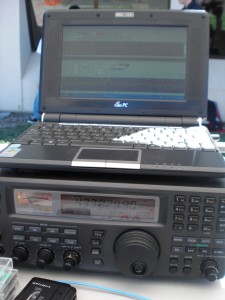
Then it was in the hands of the recovery team. I wasn’t on it, so I don’t know exactly what happened, but then ended up finding one balloon (the one my payload was on), due in part to the great signal strength I was dumping out! The other part was the brilliant tracking skillz of all involved. Thanks guys!
Anyway, we came home, and I had dinner, then waited around for the recovery team to get back (about an hour and a half later than we did). That way I could get my pictures that night!
Wanna see them? I bet you do! You sure? Oh, alright… Here’s the link [LINK UNAVAILABLE] and here’s a preview!

ENJOY!

